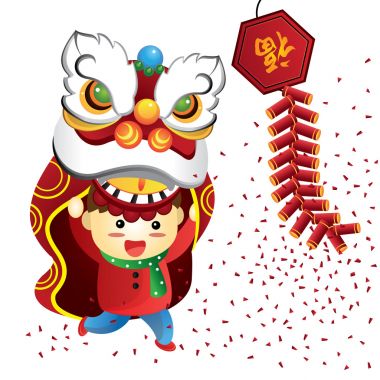Search This Supplers Products:jump ropefoam rollerweightlifting barbellyoga matresistance band
Happy Chinese New Year to You All!
time2019/01/22

- Chinese New Year celebrations, also as known as the Spring Festival, in China start on the 23rd day of the 12th lunar month of the Chinese Calendar. The festival lasts for about 23 days, ending on the 15th day of the first lunar month in the following year in the Chinese calendar.

Chinese New Year celebrations, also as known as the Spring Festival, in China start on the 23rd day of the 12th lunar month of the Chinese Calendar. The festival lasts for about 23 days, ending on the 15th day of the first lunar month in the following year in the Chinese calendar.
Happy Chinese New Year to You All!
2018 is the 6th year of ProCircle. In this year, ProCircle has achieved most of their goals. The B2B Department has moved into a new office and the employees are double than last year. And in this year, ProCircle has established their four branch offices-- SellGoal, Spot Tech, Zhen Chuang, Warm Design. And ProCircle has served more than 10,000 big and small clients. In this year, ProCircle has grown much. ProCircle ‘s Director of Overseas Department, Trigger has won the first prize during the Foreign Trade Talent Show of the East China Competition Zone. The Vice-General Manager Simon has been interviewed by the CCTV.
All of these successes and achievements are owed to whole customers and every one of ProCircle. ProCircle, here, owe you our deepest gratitude.
A very happy Chinese New Year you all.
-
What Do People Do?
Many people clean their homes to welcome the Spring Festival. They put up the posters with poetic verses on it to their doors, Chinese New Year pictures on their walls, and decorate their homes with red lanterns. It is also a time to reunite with relatives so many people visit their families at this time of the year.

In the evening of the Spring Festival Eve, many people set off fireworks and firecrackers, hoping to cast away any bad luck and bring forth good luck. Children often receive “lucky” money. Many people wear new clothes and send Chinese New Year greetings to each other. Various activities such as beating drums and striking gongs, as well as dragon and lion dances, are all part of the Spring Festival festivities.
-
Why Chinese Called Celebrating CNY As “Guo Nian (过年)”?
Once every year at the beginning of Chinese New Year, the Nian comes out of hiding to feed, but during winter since food is sparse he would go to the village. He would eat the crops and sometimes the villagers, mostly children. There are several accounts as to how it looked like such as the way some sources cited that it resembles a flat-face lion, with a dog's body and prominent incisor. Other authors described it as larger than an elephant with two long horns and many sharp teeth. The weaknesses of the Nian are purported to be a sensitivity to loud noises, fire, and a fear of the color red.

Some local legends attribute the Chinese lion dance (Chinese: 舞獅) to the legend of the Nian. The tradition has its origins in the story of a Nian's attack on a village. After the attack, the villagers discussed how to make the Nian leave them in peace. Since it was discovered that the beast was afraid of the color red, people would put red lanterns and spring scrolls on their windows and doors. They would also leave food at their doorstep in a bid to divert it from eating humans.
The traditions of firecrackers, red lanterns, and red robes found in many Lion Dance portrayals originate from the plan the villagers had in which drums, plates, and empty bowls were hit, red robes were worn, and firecrackers were thrown, causing loud banging sounds that they hoped would intimidate the Nian. According to this same myth, captured by Hongjun Laozu, an ancient Taoist monk, and Nian became Hongjun Laozu's mount.
Key Words
